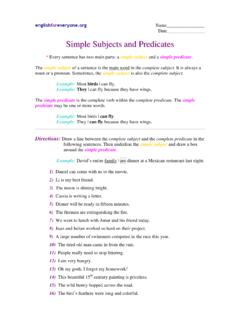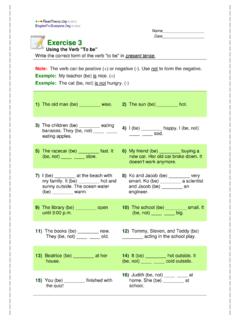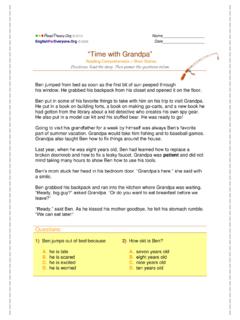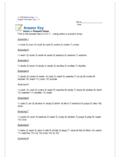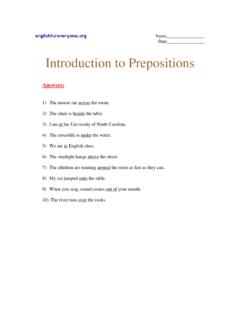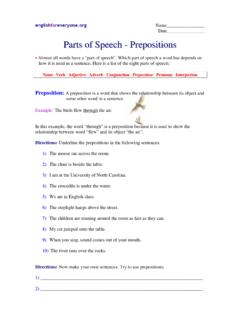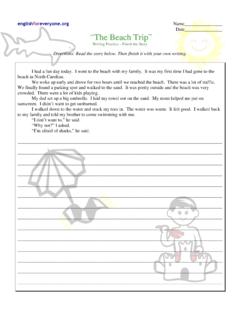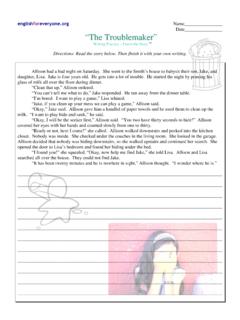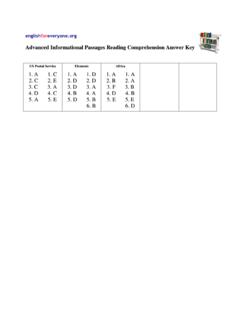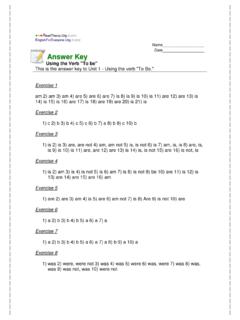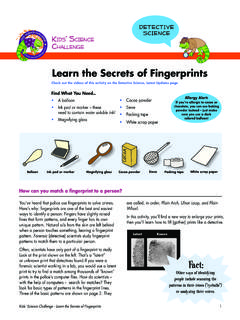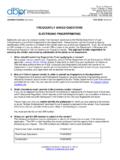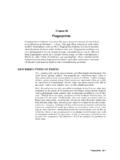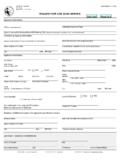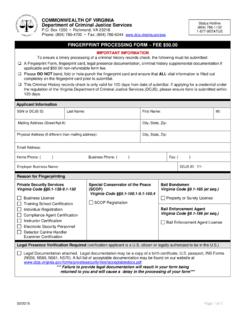Transcription of Informational Passages RC - Fingerprints
1 Name_____ Date_____ FFiinnggeerrpprriinnttss Reading Comprehension Informational Passages ) Directions: Read the passage. Then answer questions about the passage below. If you enjoy watching crime shows on TV, you know that Fingerprints play a large role in identifying people. But, you might be surprised to find out that using Fingerprints for identification is not a new science. In fact, it is very old dating back at least as far as 1885-1913 In Babylon, when people agreed to a business contract, they pressed their Fingerprints into the clay in which the contract was written. Thumbprints have also been found on clay seals from ancient China.
2 In 14th century Persia, which is now Iran, a government doctor recognized that all Fingerprints are different. In 1684, a British doctor, Nehemiah Grew, spoke about the ridged surfaces of the fingers. In 1686, a professor of aannaattoommyy (the study of the structure of the human body) named Marcello Malpighi, wrote about the ridges and loops in Fingerprints . Malpighi s work was considered so important that a layer of skin found on the fingertips was named after him. This layer of skin is called the Malpighian layer. Although scientists had studied Fingerprints , the value of fingerprinting in the identification of individuals did not become clear until later. Sir William James Herschel is generally thought to be the first European to realize that Fingerprints were uunniiqquuee to each person.
3 In his work as chief magistrate in the Hoogly district in Jungipoor, India, Herschel asked people to put their handprints on contracts. Herschel believed that personal contact with the contracts made people more likely to honor their commitments, or to keep their promises. As he looked at more and more handprints, he began to see that all the handprints were different. He started to believe that Fingerprints were unique, which means they are all different from each other, and ppeerrmmaanneenntt, which means that they do not ever change. To prove that they never change, Herschel kept track of his own Fingerprints over his entire lifetime. Dr. Henry Faulds, a British surgeon at a Japanese hospital, began studying the furrows (also called ridges) on fingertips in the 1870s.
4 He published an article in a scientific journal about the use of Fingerprints as a tool in identification. He also ddeevviisseedd, or invented, a system of classifying Fingerprints . He wrote Charles Darwin about his findings, but Darwin was getting too old to work on the findings. So, he promised to pass the information to his cousin, Sir Francis Galton. Using Henry Faulds s findings, Galton published a major book on classifying Fingerprints based on arches, loops, and whorls. His work with Sir Edward R. Henry on fingerprint classification was the basis of a classification system which is still used by law enforcement agencies in English speaking countries. The Federal Bureau of Investigation (FBI) now uses a variation of the Galton Henry system.
5 Although the use of fingerprinting in identification oorriiggiinnaatteedd in Britain, it has been developed in the United States. In 1924, two large fingerprint collections were combined to form the foundation of the Identification Division of the FBI. Within the Identification Division, the Integrated Automated Fingerprint Identification Systems (IAFIS) can search and find Fingerprints anywhere in the United States within thirty minutes. The IAFIS can compare results with automated fingerprint systems in countries around the world. The IAFIS has the Fingerprints of more than 250 million people on file. About one in six Americans has Fingerprints on file with the FBI. But not all the Fingerprints are related to criminal investigations.
6 People need to have their Fingerprints taken for many other reasons. People have their Fingerprints taken for employment, licenses, and adoption. For example, when people want to work for the government in ccllaassssiiffiieedd,, secret jobs, their Fingerprints are checked to be sure they do not have a criminal background. When prospective parents adopt a child, their Fingerprints are matched against those of all criminals for the safety of the child. QQuueessttiioonnss:: 11)) HHooww wweerree ffiinnggeerrpprriinnttss uusseedd iinn aanncciieenntt ttiimmeess?? A. To seal contracts B. To sign agreements C. To identify criminals D. All of the above E. Both A and B are correct.
7 22)) WWhhoo wwrroottee aabboouutt ffiinnggeerrpprriinnttss iinn 11668866?? A. Henry Faulds B. Charles Darwin C. Nehemiah Grew D. Marcello Malpighi E. William James Hershel 33)) WWhhyy ddiidd Sir William James Herschel ask people to put their handprints on contracts?? A. He wanted to be able to better identify criminals. B. The people were not able to write. C. He wanted people to keep their promises. D. He wanted to follow the local customs. E. This was required by the intelligence agency that he was a member of. 44)) HHooww lloonngg ddooeess iitt ttaakkee tthhee IIAAFFIISS ttoo ffiinndd ssoommeeoonnee ss ffiinnggeerrpprriinnttss?? A. 30 seconds B.
8 30 minutes C. 30 hours D. 30 days E. None of the above 55)) WWhhyy wwoouulldd aa nnoonn ccrriimmiinnaall hhaavvee tthheeiirr ffiinnggeerrpprriinnttss ttaakkeenn?? A. To adopt a child B. To get some jobs C. To get certain licenses D. To identify themselves E. All of the above VVooccaabbuullaarryy:: 11)) AAnnaattoommyy iiss tthhee ssttuuddyy A. surgery. B. criminals. C. the body. D. Fingerprints . E. identification. 22)) TThhee bbeesstt ssyynnoonnyymm ffoorr uunniiqquuee A. uniform. B. honorable. C. singular. D. similar. E. Both C and D are correct. 33)) TThhee bbeesstt ssyynnoonnyymm ffoorr ppeerrmmaanneenntt A. scientific. B. automated.
9 C. unchanging. D. unimportant. E. unreasonable. 44)) AAnnootthheerr wwaayy ttoo ssaayy ddeevviisseedd A. came about. B. came around. C. came up with. D. came through. E. came down with. 55)) TThhee ppllaaccee wwhheerree ssoommeetthhiinngg oorriiggiinnaatteedd iiss tthhee ppllaaccee wwhheerree A. started. B. ended. C. arrived. D. was remembered. E. was forgotten. 66)) IIff yyoouu wwoorrkk iinn aa ccllaassssiiffiieedd jjoobb,, A. may not discuss your work. B. work only with Fingerprints . C. work with automated systems. D. must travel to many different places. E. probably have a criminal background.
